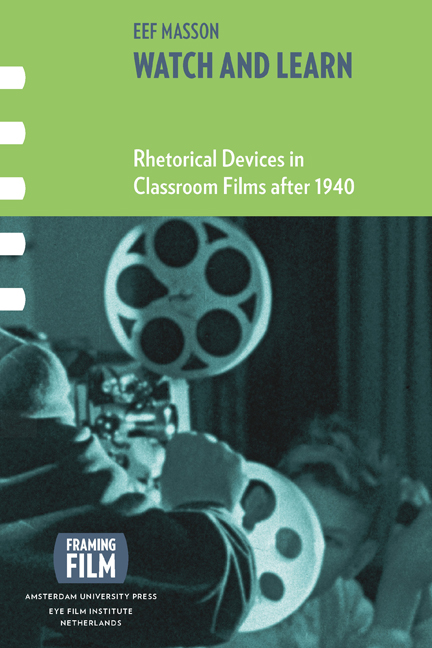3 - Rhetoric: Text & Frame
Published online by Cambridge University Press: 20 January 2021
Summary
INTRODUCTION
In his introduction to the National Film Preservation Foundation's The Field Guide to Sponsored Films (2006), Rick Prelinger ponders some of the challenges of what he calls ‘ephemeral film scholarship’. He writes:
As historically neglected film types gain attention, archivists and scholars face challenges quite unlike those confronted in collecting the betterdocumented fiction feature. In a universe of hundreds of thousands of poorly known and largely undocumented works, where do we begin? […] How can practitioners compare similar titles and characterize their specificities […]? (x)
The methodological difficulties which the author here associates primarily with research on sponsored films (items financed and/or produced by companies, associations or institutions, often for purposes of advertising or education) equally apply to the study of titles intended more specifically for classroom teaching. As in Prelinger's case, my problem is that there is no ready-made method to analyse the films I investigate; that is, no set of procedures that takes into account both what distinguishes them from non-teaching films and any textual variation that might occur within the corpus itself.
Attempts to distinguish between various kinds of educational films, of course, have been made ever since the first such titles were rented out, both by their distributors and by academic authors (often pedagogues). Staff at NOF, for instance, based their classifications on the subject categories instated by the curricula which the films were meant to support (e.g. Stichting Nederlandse Onderwijs Film 1953). Others categorised titles according to their didactic methods or learning objectives. Some sources combine one or more of the above principles with more traditional organising criteria, such as the films’ various generic features (McClusky, 1948) or narration styles (Alexander 2010, 54-56). None of these classification systems, however, provides a useful starting point for the much more encompassing analysis that I want to conduct here.
Considering educational and classroom films retrospectively, more recent academic studies have tried to develop terminologies that allow for distinctions on a higher analytical level: a vocabulary used not so much to differentiate within the corpus itself, but to distinguish educational films from titles intended for other purposes and/or audiences.
- Type
- Chapter
- Information
- Watch and LearnRhetorical Devices in Classroom Films after 1940, pp. 127 - 144Publisher: Amsterdam University PressPrint publication year: 2012



